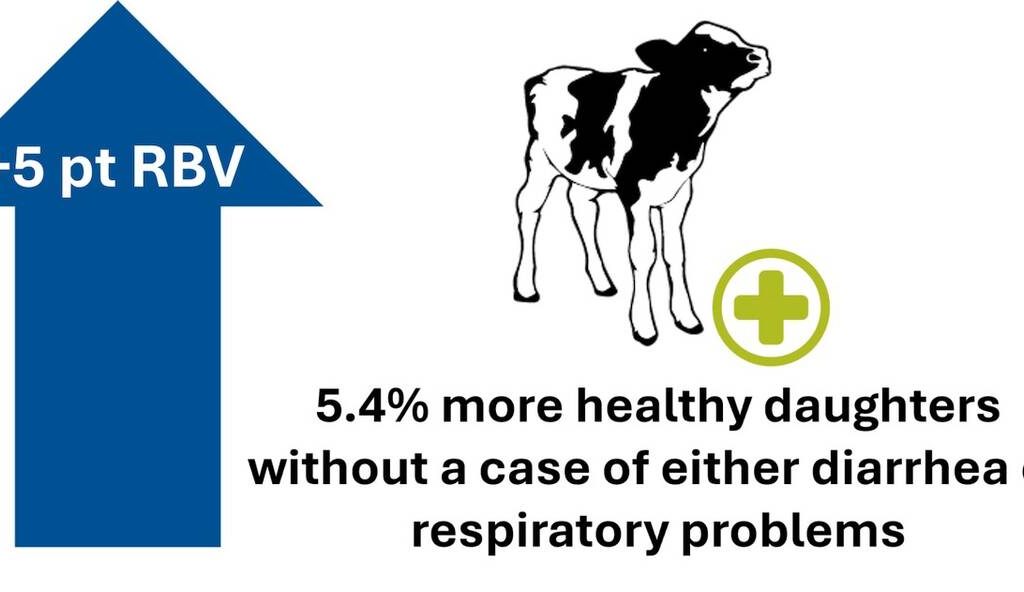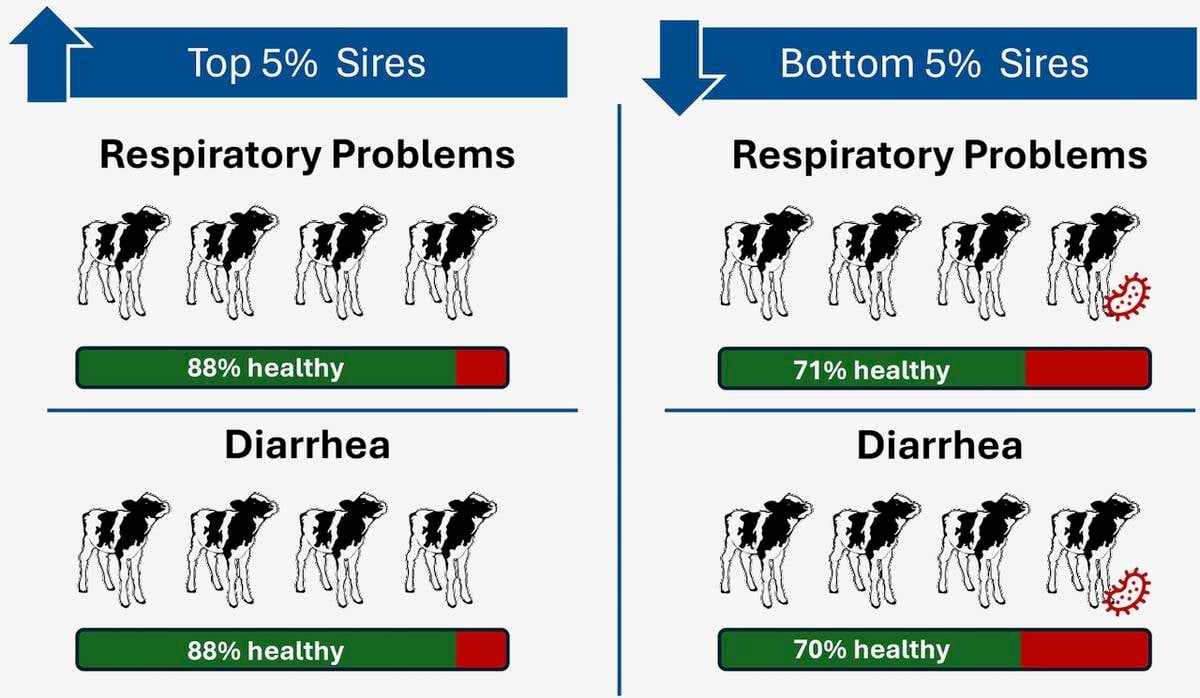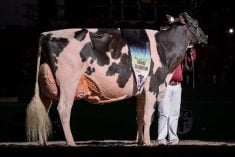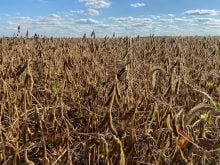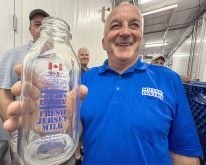A new calf health genetic evaluation will help farmers make breeding decisions that can improve calf health and resistance to disease.
Calves affected by illness not only risk being lost as future replacements but also represent a setback in economics, lifetime performance, and animal welfare.
Since the early 2000s, the dairy industry has placed growing emphasis on improving animal health.
However, genetic evaluations have focused mainly on health traits expressed in cows, leaving early-life health in heifers overlooked. Yet, improving resistance to disease in calves is a highly valuable opportunity for dairy farmers.
On Aug. 12, 2025, Lactanet will launched a calf health genetic evaluation for the Holstein breed, combining the two main calf health illnesses, respiratory problems and diarrhea. With this new tool, producers can align superior calf management practices with genetic potential, creating a stronger foundation for healthier herds and long-term success.
Health risks in calves
Respiratory problems and diarrhea are the leading causes of involuntary culling and mortality in dairy calves before first calving.
Respiratory problems include infections that affect both the upper and lower respiratory tracts and can be caused by viruses or bacteria. Commons signs include coughing, fever, nasal discharge and changes in respiration rate.
Diarrhea is characterized by persistent loose stools, accompanied by decreased appetite, lethargy, dehydration, and fever. A range of viruses, bacteria and parasites can be the source of infection.
Both diseases are heavily influenced by housing or feeding practices, level of pathogen exposure, and the calf’s immune response. These complexities make on-farm disease control challenging, contributing to the significant prevalence rate in Canadian herds of 19 per cent for respiratory problems and 21 per cent for diarrhea.
The cost of early-life diseases
It is no secret that diseases early in life come at a cost, not only in increased veterinarian intervention and labour, but also through impacts on longer term productivity. On average, treating a case of respiratory illness costs around $60, according research by Dubrovsky and others reported in 2020 in the Journal of Dairy Science, while diarrhea can cost up to $140 per case as reported by Roche and others in research at the University of Guelph published in 2020.
These numbers do not account for the lasting effects on future performance. For example, a 2021 study found that heifers experiencing respiratory disease produced 121 kg less milk during their first lactation compared to healthy animals, with similar results being reported for diarrhea in research by Buczinski and others reported in 2021 in the Journal of Dairy Science.
With these challenges in mind, the upcoming genetic evaluations for calf health offers dairy producers a new opportunity to reduce disease risk and improve profitability right from the start.
The power of record keeping
Since 2007, Canadian dairy producers have increasingly recorded calf health traits, providing the basis for genetic evaluations. This includes roughly 95,000 records from 84,000 heifers in 1,400 herds.
Respiratory problems from birth to 180 days comprise 70 per cent of these records with the remaining 30 per cent of records as Diarrhea cases from birth to 60 days of age. As presented in the next section, respiratory problems and diarrhea are genetically linked. Therefore, having information on either trait increases the accuracy of evaluations for both traits. This highlights the importance of collecting information on both calf diseases, to maximise the potential of the overall calf health evaluation. Moving forward, accurate and high-quality records should remain a top priority for the success of long-term genetic selection.
Understanding genetic evaluations for calf health
The calf health genetic evaluation is a two-trait, single-step genomic evaluation system that combines diarrhea and respiratory problems. A moderate genetic correlation of 53 per cent exists between the two traits, reflecting the reality that calves who experience one illness are more likely to suffer from the other.
The calf health evaluation is also largely independent of other evaluated traits in Canada. Like other health traits, the heritability is relatively low at 5.4 per cent for respiratory problems and 4.4 per cent for diarrhea. Nevertheless, such heritability levels indicate that genetic selection can contribute to improved calf health.
Calf health is expressed as a relative breeding value (RBV), where the average is set to 100 and a standard deviation of five is used, with most animals therefore falling within a range of 85 to 115.
Sires with higher RBVs are expected to produce daughters with greater resistance to calf health diseases. For example, a five-point increase in a sire’s RBV for calf health equates to 5.4 per cent more healthy daughters without a case of either diarrhea or respiratory problems. On average, young genomic bulls and heifers achieve a reliability for calf health of 70 per cent, offering producers a valuable tool for informed breeding decisions.
A sire will receive an official calf health evaluation once they are official for both respiratory problems and diarrhea, requiring a minimum of 20 daughters with records in at least five herds and a reliability above 70 per cent. In an analysis of officially proven sires, the top five per cent of sires for respiratory problems had, on average, 88 per cent healthy daughters, and the top five per cent of sires for diarrhea also had 88 per cent healthy daughters. On the other hand, the bottom five per cent of sires for each trait have an average of 71 per cent and 70 per cent healthy daughters, respectively.
In summary, healthy calves are the foundation for a productive and profitable dairy herd. Genetic evaluations for calf health, launched on Aug. 12, 2025, give dairy farmers a new tool to reduce respiratory problems and diarrhea. By selecting sires with favorable calf health RBVs, farmers can raise healthier calves, lower treatment costs, and build a more resilient herd for the future.
Hannah Sweett and Colin Lynch both work for Lactanet.
